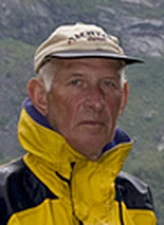Felix Gradstein

The 2010 Jean Baptiste Lamarck Medal is awarded to Felix Gradstein for his outstanding research in stratigraphy, micropalaeontology and geochronology.
Felix M. Gradstein has a long (over 35 years) and distinguished career in the fields of stratigraphy, micropalaeontology and geochronology. He is renowned for coordinating the development of the international geological time scale: over the last 25 years Gradstein et al.‘s Time Scales, most recently the 2004 “Geologic Time Scale” (GTS2004), have become a ubiquitous “gold standard” for all Earth Scientists.
Gradstein has authored over 140 scientific publications in the fields of geological time scales, quantitative stratigraphic methods, stratigraphy and sedimentology of petroleum basins, plate tectonics, palaeoceanography, and deep-water micropalaeontology. He has a career that spans the divides between industry, government and academia, with periods working for Esso and Saga Petroleum, the Geological Survey of Canada, and Dalhousie University. He is currently Professor in the Natural History Museum, University of Oslo. Gradstein has also been very active in professional activities, serving as Chair of IGCP Project 181 and the ICS-IUGS Committee on Quantitative Stratigraphy (1985–1993), as well as being Chair of the International Commission on Stratigraphy (ICS) from 2000 to 2008.
Gradstein is working diligently on a new version of the Geologic Time Scale that should come out within the next two years. Partly as a result of GTS2004, and its special effort to quantify its uncertainty, the ICS, CHRONOS, EARTH TIME, and GTS NEXT (projects) have yielded major new insights in isotope geochronological dating, and a flurry of important new chronostratigraphy and age dates. This is all finding its way into a new Geologic Time Scale, with new data involving the planetary and Cryogenian–Ediacaran scales, inorganic and organic isotope chronology, paleophyticum times, sequence stratigraphy and many others areas.
